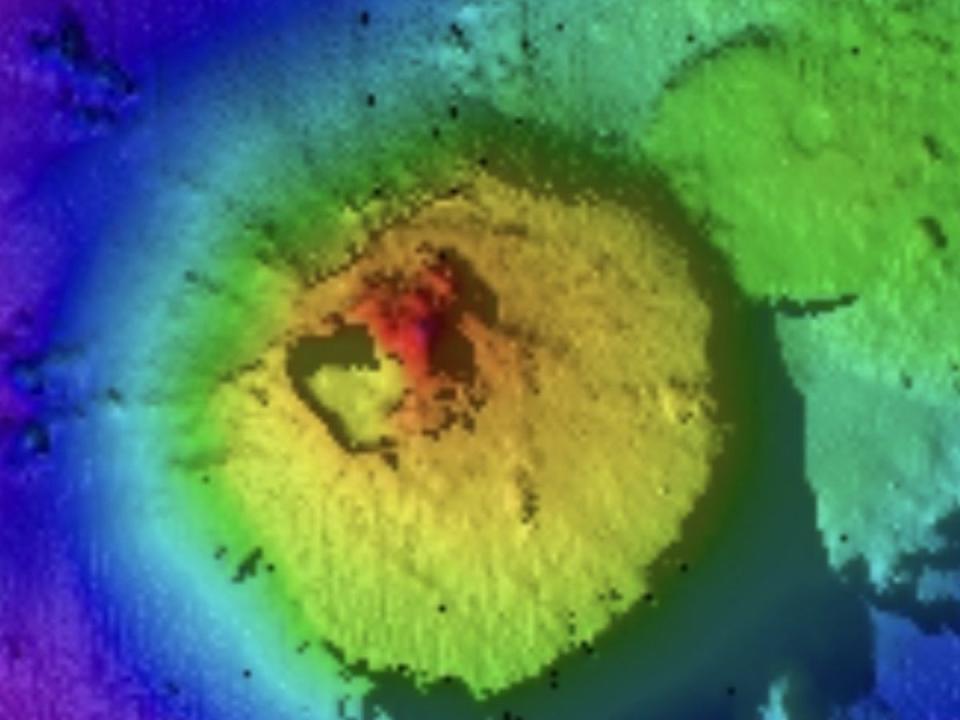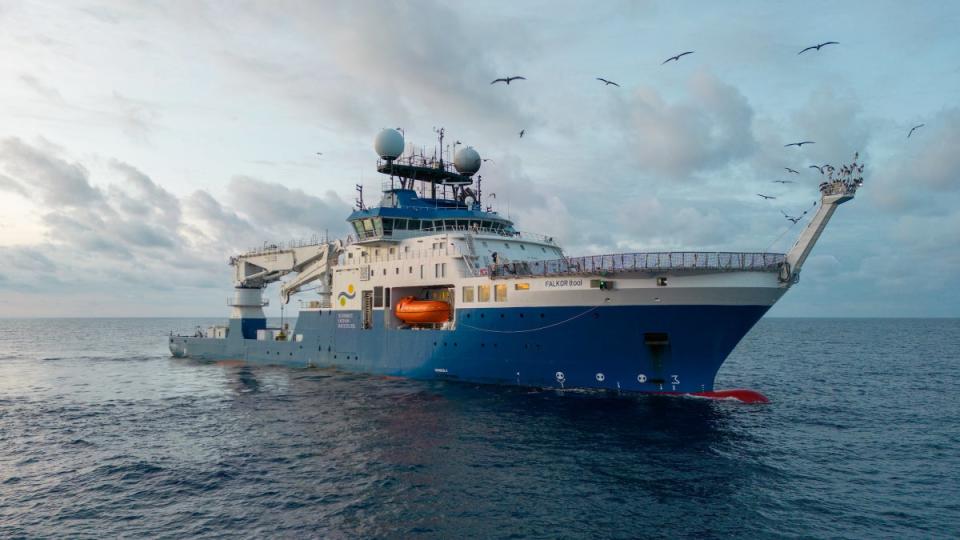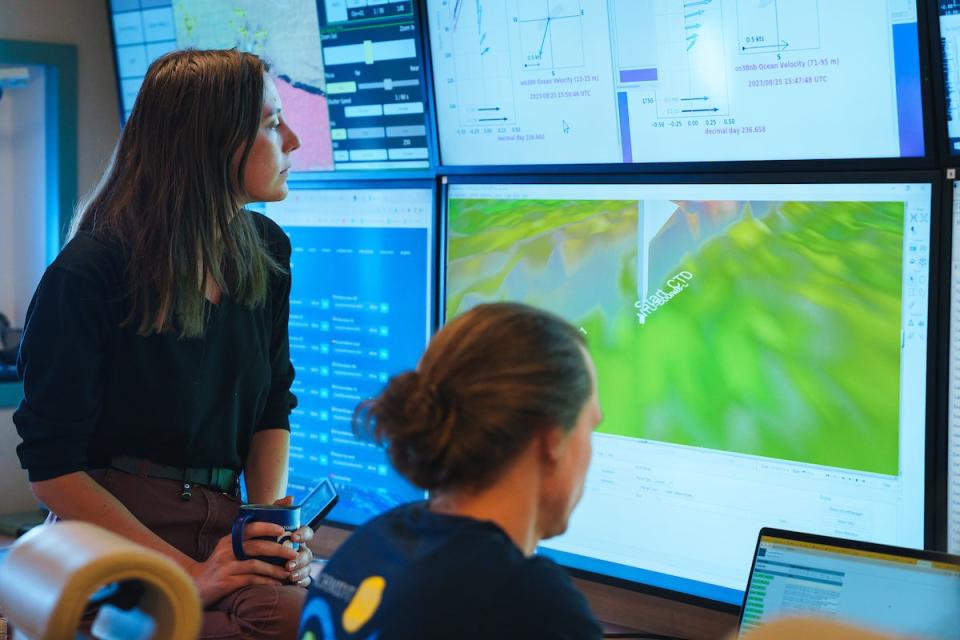Underwater mountain twice height of Burj Khalifa discovered off coast of Guatemala
- Oops!Something went wrong.Please try again later.
An underwater mountain taller than the world’s highest building has been discovered by scientists in Central America.
Schmidt Ocean Institute researchers discovered the seamount while mapping the sea bed off the coast of Guatemala.
Seamounts are underwater mountains usually formed from the remnants of extinct volcanoes.
The giant structure measures 5,249ft (1,600m), making it twice the height of the Burj Khalifa in the United Arab Emirates.

The skyscraper, in Dubai, is the world’s tallest building at a height of 2,722ft (830m).
Experts from the Schmidt Ocean Institute discovered the seamount, which covers 14 square km, using a multi-beam echosounder on the Falkor (too) research vessel.
“While there is so much we’ve come to understand as discoveries tumble ever faster into view, so much remains unknown in our ocean – and we are thrilled to continue exploring,” Wendy Schmidt, co-founder and president of the institute, said.

The seafloor feature was discovered 84 nautical miles outside the Guatemalan Exclusive Economic Zone during a six-day crossing this summer from Puntarenas, Costa Rica, towards the East Pacific Rise.
The Schmidt Ocean Institute on-board crew included a GEBCO-trained hydrographic expert, who confirmed that the seamount is not in any seafloor bathymetric database.
It was the ninth seafloor discovery since the research vessel Falkor (too), was launched in March.
Discoveries have included two additional uncharted seamounts in the Galápagos Islands Marine Reserve, three new hydrothermal vent fields, a new ecosystem underneath hydrothermal vents, and two pristine cold-water coral reefs.
Seamounts are biodiversity hotspots, providing surfaces for deep-sea corals, sponges, and a host of invertebrates.


According to NOAA Ocean Exploration, recent satellite-based estimates indicate there are more than 100,000 unexplored seamounts taller than 1,000 meters.
With continued exploration and mapping of the deep sea, more accurate and higher-resolution maps will guide scientific research and future discoveries, while offering an improved understanding of geological processes, researchers hope.
“A seamount over 1.5 kilometers tall which has, until now, been hidden under the waves really highlights how much we have yet to discover,” Dr Jyotika Virmani, executive director of SOI, said.
“A complete seafloor map is a fundamental element of understanding our Ocean so it’s exciting to be living in an era where technology allows us to map and see these amazing parts of our planet for the first time!”

